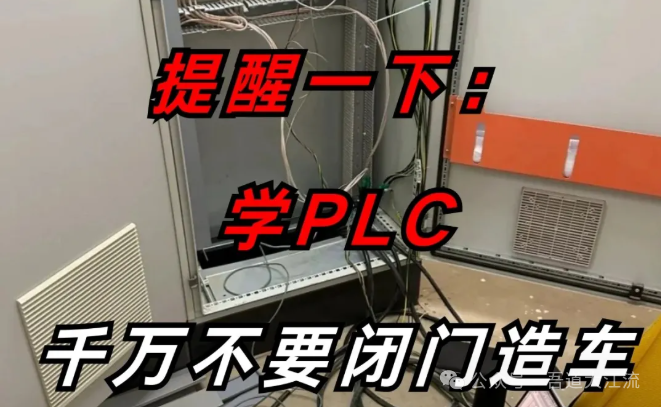
Choosing PLC Cables: Enhancing Signal Transmission Cable Technology and Interference Resistance!
Introduction
**Hello everyone!** Today we are going to discuss a seemingly ordinary but extremely important topic—the selection of PLC signal transmission cables.Don’t underestimate this cable, it is the “lifeline” for the stable operation of PLC systems! **Did you know?** In industrial sites, over 30% of signal interference issues stem from improper cable selection.The good news is that if you choose the right cable, the interference resistance of your PLC system can be improved by more than 80%! **Want to know how to do it?** Let’s dive deeper together!
Why is Cable Selection So Important?
Let’s start with avivid analogy: PLC signal transmission is like making a phone call in a noisy factory. If you use a regular phone line (equivalent to low-quality cables), you may not hear what the other person is saying; but if you switch to professional noise-canceling headphones (equivalent to high-quality signal cables), even in a noisy environment, the conversation can be clear and smooth.
In a PLC system,signal cables have three major missions:
-
Accurate Transmission: Delivering signals from sensors and actuators to the PLC without error
-
Interference Resistance: Countering the ubiquitous electromagnetic interference in factories
-
Long-term Stability: Maintaining reliable performance for years in harsh environments
Red Alert:<span>If the cable is improperly selected, it can lead to signal fluctuations, equipment malfunctions, or even safety incidents!</span>
Common Sources of Interference and Cable Response Strategies
There are various “signal killers” lurking in factories; let’s see how to “arm” the PLC system with suitable cables:
| Interference Type | Typical Source | Recommended Cable Solution |
|———|———|—————-|
| Electromagnetic Interference (EMI) | Frequency converters, high-power motors | Shielded twisted pair (e.g., PROFIBUS cable) |
| Radio Frequency Interference (RFI) | Wireless devices, high-frequency equipment | Double-shielded cable |
| Ground Loop Interference | Potential differences between different devices | Cables with isolation layers |
| Crosstalk | Parallel multiple signal lines | Twisted pair + independent shielding |
Blue Tip:<span>When selecting cables, always consider the transmission distance. Generally recommended:</span>
-
Digital signals: no more than 100 meters (without relay)
-
Analog signals: no more than 50 meters (for high precision requirements)
Professional Cable Technology Analysis
1. Shielding Technology: The Signal’s “Bulletproof Vest”
The shielding layer is the first line of defense against interference, with common types including:
-
Aluminum foil shielding: Lightweight and economical, suitable for general interference environments
-
Braided copper mesh shielding: Stronger protection, can withstand heavy interference
-
Composite shielding: Aluminum foil + copper mesh, military-grade protection
Key Point:<span>The shielding layer must cover 360° and be properly grounded!</span>
2. Twisted Pair Structure: Natural Interference Canceler
Twisted pair cables usetwisted pairs to make the interference signals on the two wires cancel each other out. The smaller the twist pitch, the stronger the interference resistance.
Red Emphasis:<span>For analog signals (e.g., 4-20mA), twisted pair cables must be used!</span>
3. Jacket Material: The “Protective Shield” for Harsh Environments
Select based on the usage environment:
-
PVC Jacket: Regular environments, economical
-
PUR Jacket: Oil-resistant, chemical corrosion-resistant
-
TPE Jacket: Extreme temperature environments (-40℃~90℃)
Practical Selection Guide
Digital Signal Transmission
Recommended Cables:
-
Standard Type: Belden 3106A (22AWG, double shielded)
-
Economical Type: LAPP UNITRONIC® LIYCY
Wiring Points:
-
Keep away from power lines (minimum distance 30cm)
-
Avoid running parallel to power lines (if crossing, use a 90° right angle)
Analog Signal Transmission
Recommended Cables:
-
High Precision Type: Siemens 6XV1830-5EH10
-
General Type: HMS Anybus CC-FB
Blue Tip:<span>Terminal resistors (usually 120Ω) must be added at both ends of the analog signal line!</span>
Network Communication (PROFINET/Ethernet)
Must Use: Industrial-grade Cat6A SF/UTP cable
Prohibited from using regular office network cables!
Common Mistakes and Solutions
Mistake 1: Using regular cables instead of dedicated signal cables
Consequence: Signal distortion rate up to 15%
Solution: Immediately replace with shielded twisted pair cables
Mistake 2: Shielding layer not grounded or incorrectly grounded
Consequence: Shielding effectiveness reduced by 90%
Correct Practice: Usesingle-ended grounding (usually grounding at the PLC end)
Mistake 3: Different signal types sharing cables
Consequence: Severe crosstalk
Best Practice:
-
Separate power cables and signal cables in different conduits
-
Use independent cables for signals of different voltage levels
Upgrade Case: Transformation Effects in an Automotive Factory
Before Transformation:
-
Used regular control cables
-
Signal anomalies occurred 3-4 times a month
-
Overall Equipment Efficiency (OEE) was only 76%
Transformation Measures:
-
Replaced all withdouble-shielded twisted pair cables
-
Re-planned wiring paths
-
Improved grounding system
After Transformation:
-
Signal interference issues eliminated
-
OEE increased to 89%
-
Maintenance costs reduced by 40%
Expert Recommendations
-
Don’t be tempted by cheap options: High-quality cables may cost 20% more, but the cost of failures can be 200% higher!
-
Leave some margin: For important lines, it is recommended to reserve 15-20% spare cores
-
Regular Testing: Use a **Time Domain Reflectometer (TDR)** to check cable status annually
Interactive Discussion
-
What type of PLC signal cables does your factory use? What interference issues have you encountered?
-
Do you have any special experiences to share for long-distance signal transmission?
-
If the budget is limited, which part of the cables would you prioritize upgrading? Why?
Conclusion
Remember: The reliability of a PLC system starts with choosing a good cable!Investing in high-quality signal transmission cables is investing in the stable operation of the system. I hope this article helps you comprehensively enhance the interference resistance of your PLC system!If you have any confusion about cable selection, feel free to discuss in the comments!
Finally, let me leave you with a saying:<span>"In the field of industrial automation, signal cables are like a nervous system; only when the 'nerve fibers' are healthy can the entire system be responsive and reliable!"</span>
ShareSaveViewLike